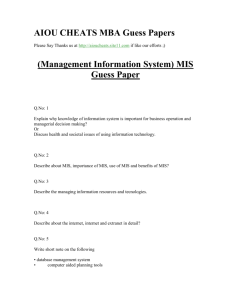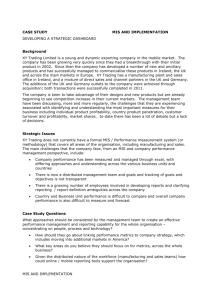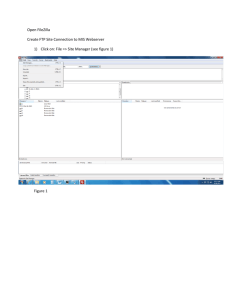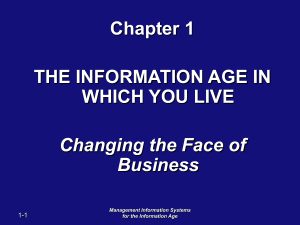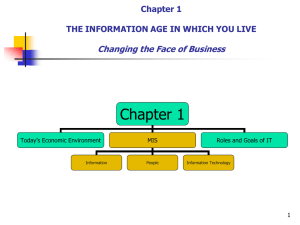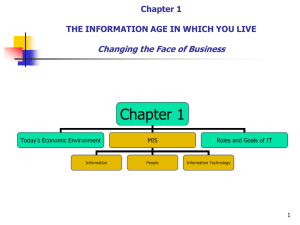Introduction to MIS - Information Technology Services
advertisement
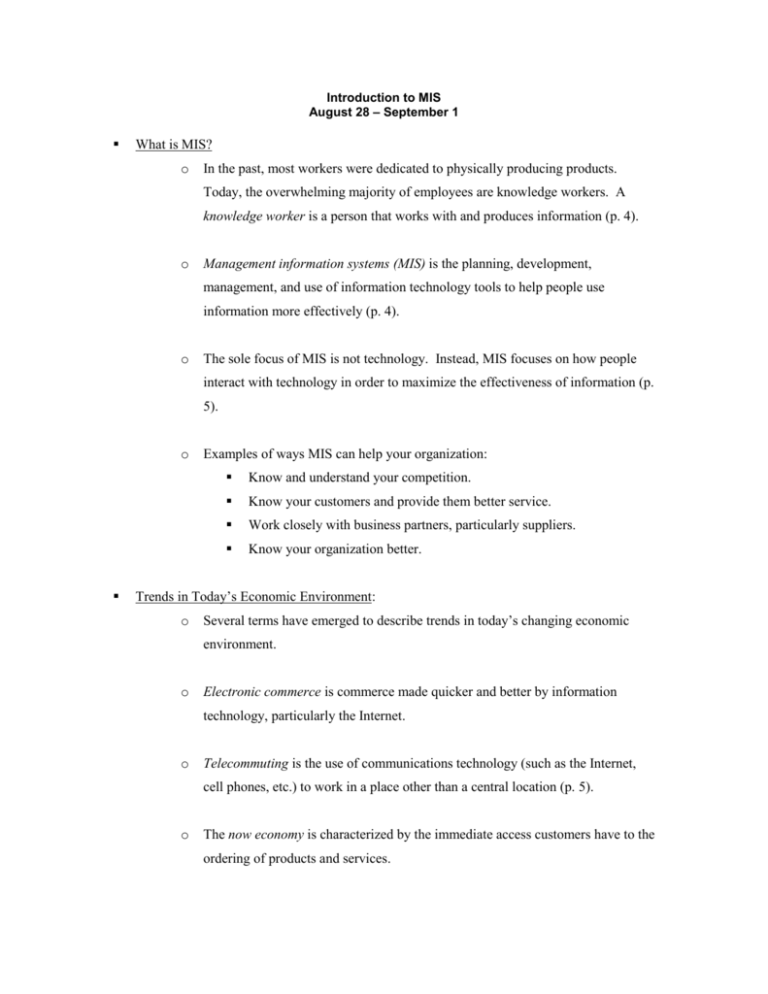
Introduction to MIS August 28 – September 1 What is MIS? o In the past, most workers were dedicated to physically producing products. Today, the overwhelming majority of employees are knowledge workers. A knowledge worker is a person that works with and produces information (p. 4). o Management information systems (MIS) is the planning, development, management, and use of information technology tools to help people use information more effectively (p. 4). o The sole focus of MIS is not technology. Instead, MIS focuses on how people interact with technology in order to maximize the effectiveness of information (p. 5). o Examples of ways MIS can help your organization: Know and understand your competition. Know your customers and provide them better service. Work closely with business partners, particularly suppliers. Know your organization better. Trends in Today’s Economic Environment: o Several terms have emerged to describe trends in today’s changing economic environment. o Electronic commerce is commerce made quicker and better by information technology, particularly the Internet. o Telecommuting is the use of communications technology (such as the Internet, cell phones, etc.) to work in a place other than a central location (p. 5). o The now economy is characterized by the immediate access customers have to the ordering of products and services. o Mobile commerce (a.k.a. M-commerce) is a type of e-commerce in which the customer uses a wireless device such as a cell phone or personal digital assistant (p. 18). o A global economy is one in which businesses separate without regard to physical and geographical boundaries. A transnational firm produces and sells products and services in countries all over the world. o In the digital economy, information will be moved electronically. In other words, this economy will be “paperless”. Data and Information: o Data are facts that describe something. Information is data that has a particular meaning (p. 6). o Three dimensions of information: Time dimension (p. 6): Is the information available when you need it? In other words, is it timely? Does the information describe the appropriate time period? Location dimension (p. 7): Do you have access to information no matter where you are (home, airplane, hotel, etc.)? Form dimension (p. 8): Do you have information that is usable and understandable by you? Is the information accurate? o Flow of information: Information in an organization flows in four basic directions: up, down, horizontally, and outward (p. 8). The upward flow of information describes the current state of the organization based on its daily transaction. Originates at the point of sale and flows upwards through the organization to the decision makers at the upper levels of management (p. 9). The downward flow of information describes the strategies, goals, and directives that originate at one level and are passed to lower levels (p. 9). The horizontal flow of information occurs between different units of a business (p. 9). The outward flow of information consists of information that is communicated to customers, suppliers, and other partners for the purpose of doing business (p. 9). o Information granularity refers to the level of detail within the information (p. 9). Information with coarse granularity is highly summarized and used by upper management (ex. sales broken down by store). Information with fine granularity is tremendously detailed and used by lower level employees (ex. information about each sale). o What information describes? Internal information describes specific aspects of an organization (p. 9). External information describes environment surrounding the organization (p. 9). Objective information describes something that is known (p. 9). Subjective information describes something that is unknown and is generally a prediction (p. 9).





